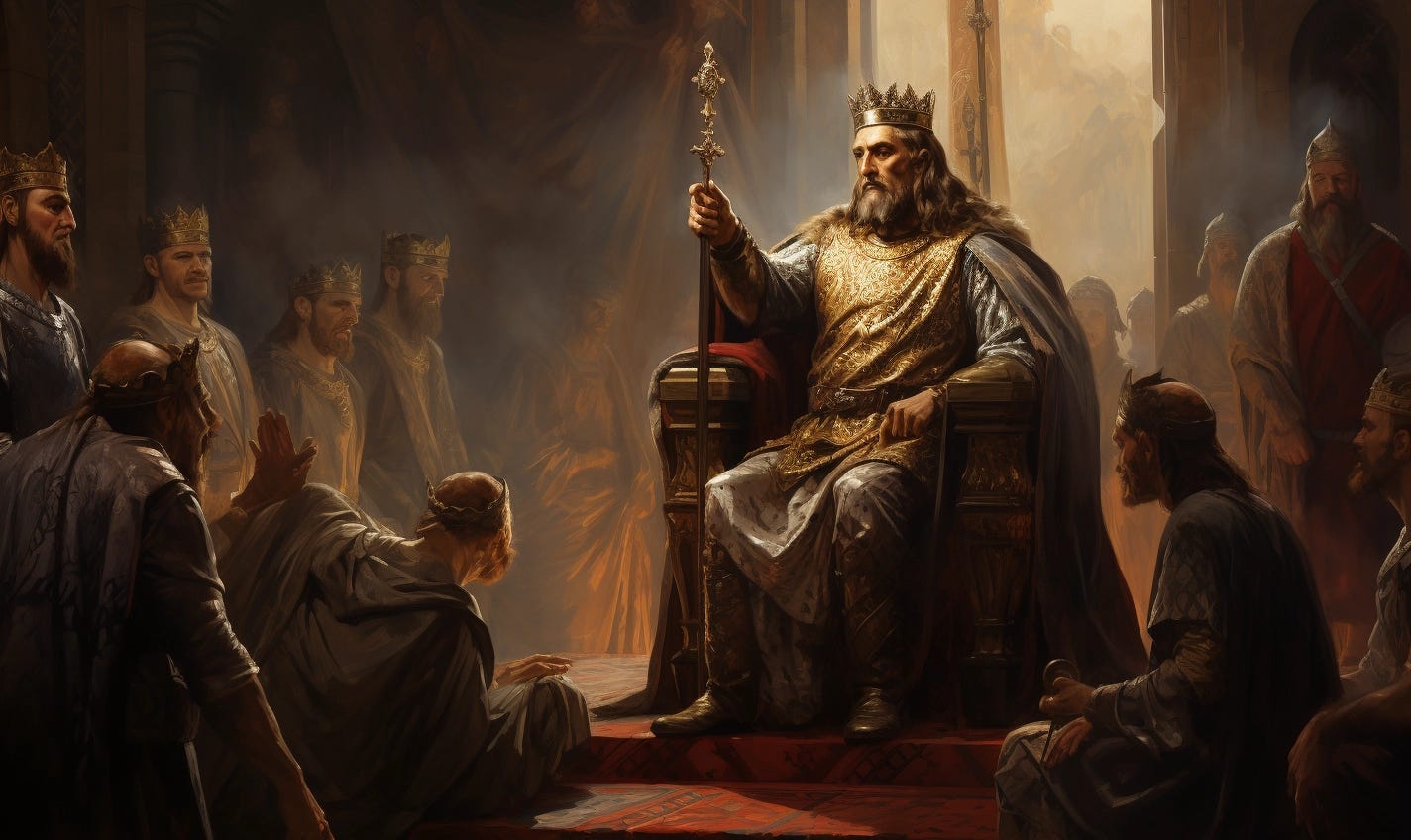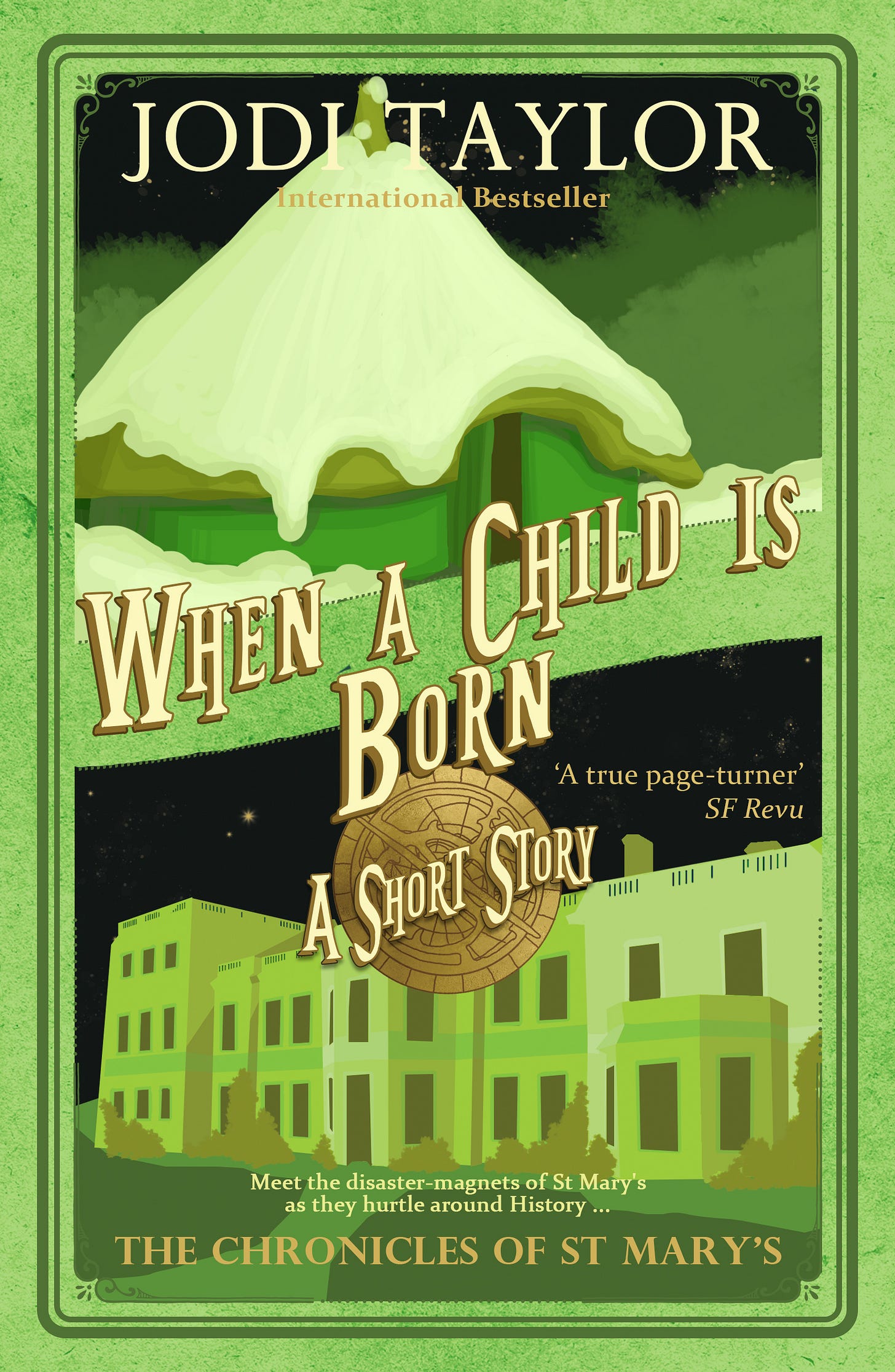The Coronation of William the Conqueror: A Turning Point in English History
Featured in "When A Child is Born" by Jodi Taylor
It’s Christmas Day 1066 and in “When A Child Is Born”, a team from St Mary's is going to witness the coronation of William the Conqueror. Or so they think...
Here’s the history behind the coronation.
The coronation of William the Conqueror marked a pivotal moment in English history. As William ascended the throne of England, he ushered in a new era characterised by Norman rule and profound changes in governance, society, and culture. Let’s explore the events leading up to William's coronation, the significance of the ceremony itself, and its lasting impact on England.
William, Duke of Normandy, claimed the English throne following the Battle of Hastings on October 14th, 1066, where he decisively defeated King Harold II and his Anglo-Saxon forces. With Harold's death on the battlefield, William's path to the throne was clear, though he faced resistance from Anglo-Saxon nobles and continued rebellions in the years that followed.
In the aftermath of his victory at Hastings, William moved swiftly to consolidate his power and assert his claim to the English throne. He marched triumphantly through southern England, receiving the submission of key cities and fortresses along the way. By the time Christmas arrived, William had firmly established himself as the de facto ruler of England, though his coronation would serve as a symbolic affirmation of his legitimacy.
On Christmas Day, 1066, William the Conqueror was crowned king of England in a solemn and grandiose ceremony at Westminster Abbey in London. The coronation was conducted by Archbishop Ealdred of York, who anointed William with holy oil and presented him with the English crown. Despite the absence of a formal coronation charter, the ceremony followed the traditional rites and rituals of medieval coronations, affirming William's divine right to rule and his role as the protector of the Church.
William's coronation marked the culmination of his ambitious quest to claim the English throne and establish Norman rule over England. The Norman Conquest brought about far-reaching changes in English society and governance, including the introduction of feudalism, the imposition of Norman law, and the redistribution of land among William's followers. The Domesday Book, compiled in 1086, provided a comprehensive survey of England's resources and served as a testament to William's administrative prowess and centralised control.
Moreover, the Norman Conquest transformed the English language, culture, and identity, as Anglo-Saxon and Norman influences merged to create a vibrant and dynamic society. The construction of castles, cathedrals, and monasteries, along with the infusion of Norman French into the English language, left an indelible mark on the landscape and culture of England.
The coronation of William the Conqueror was a watershed moment in English history, signalling the beginning of Norman rule and the end of Anglo-Saxon dominance. As William ascended the throne of England, he embarked on a transformative journey that would shape the course of English history for centuries to come. The legacy of William's coronation endures in the institutions, culture, and identity of England, serving as a reminder of the enduring impact of one of history's most significant events.
Why not read how the team from St Mary’s Institute of Historical Research got on at the event in “When A Child Is Born” - available in eBook and audiobook formats.
I hope you have enjoyed this foray into history. Please subscribe to enjoy more articles like this.
Have you discovered The Official Reading Companion and History Briefings for The Chronicles of St Mary’s series by Jodi Taylor?
If you've ever found yourself wondering who did what, when, and where in Jodi Taylor’s brilliant Chronicles of St Mary’s series — this is the companion guide you’ve been waiting for.
This guide is a must-have for both dedicated fans and curious newcomers. It contains synopses of every book and short story, detailed floor plans of St Mary’s Institute for Historical Research, History Briefings, chronological jump lists, character information, and more.
Whether you’re brushing up on the timeline or want to immerse yourself further in the chaos and charm of St Mary’s, this guide is your ultimate companion.
CLICK HERE to learn more.




